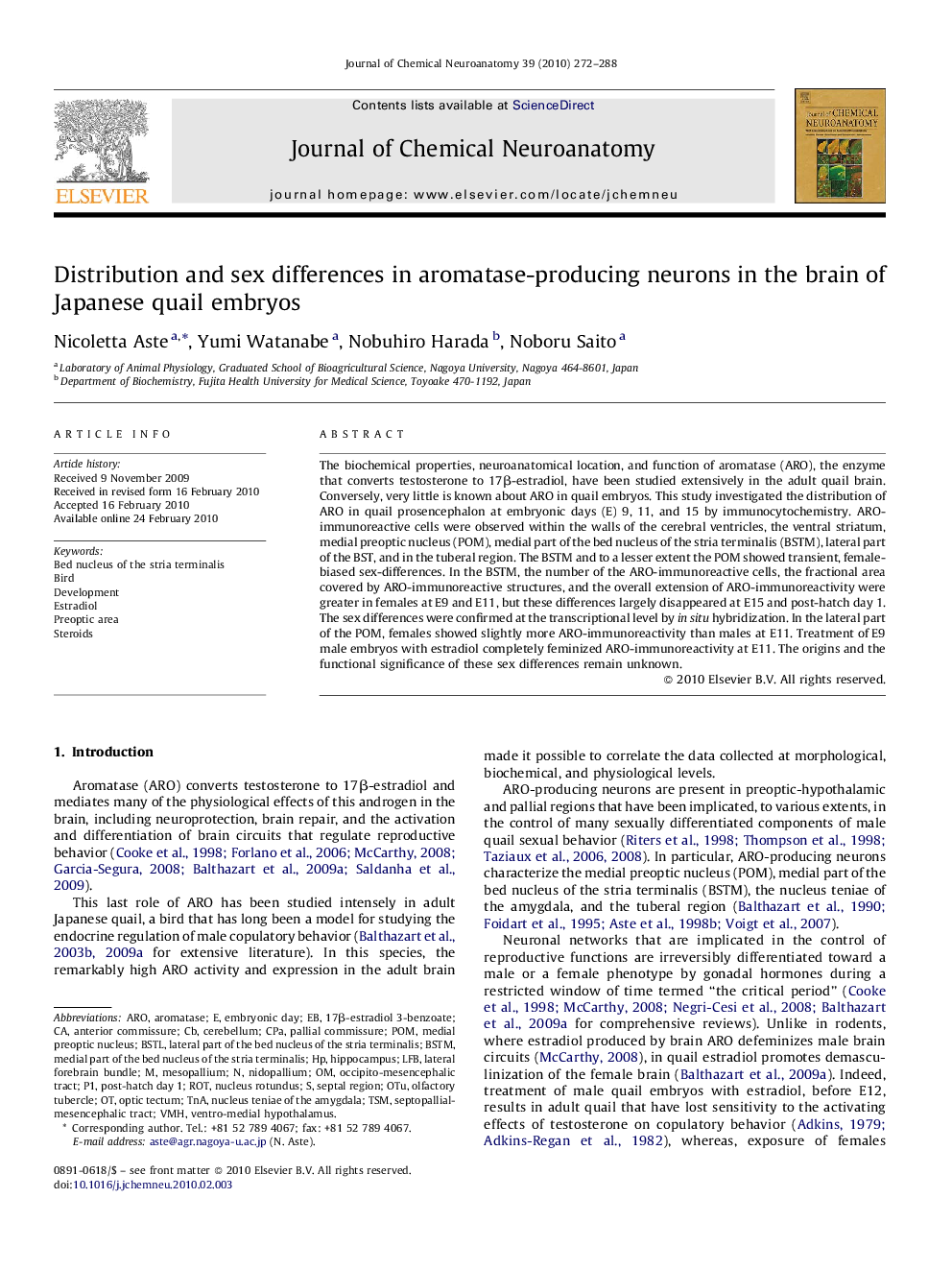| Article ID | Journal | Published Year | Pages | File Type |
|---|---|---|---|---|
| 1989139 | Journal of Chemical Neuroanatomy | 2010 | 17 Pages |
Abstract
The biochemical properties, neuroanatomical location, and function of aromatase (ARO), the enzyme that converts testosterone to 17β-estradiol, have been studied extensively in the adult quail brain. Conversely, very little is known about ARO in quail embryos. This study investigated the distribution of ARO in quail prosencephalon at embryonic days (E) 9, 11, and 15 by immunocytochemistry. ARO-immunoreactive cells were observed within the walls of the cerebral ventricles, the ventral striatum, medial preoptic nucleus (POM), medial part of the bed nucleus of the stria terminalis (BSTM), lateral part of the BST, and in the tuberal region. The BSTM and to a lesser extent the POM showed transient, female-biased sex-differences. In the BSTM, the number of the ARO-immunoreactive cells, the fractional area covered by ARO-immunoreactive structures, and the overall extension of ARO-immunoreactivity were greater in females at E9 and E11, but these differences largely disappeared at E15 and post-hatch day 1. The sex differences were confirmed at the transcriptional level by in situ hybridization. In the lateral part of the POM, females showed slightly more ARO-immunoreactivity than males at E11. Treatment of E9 male embryos with estradiol completely feminized ARO-immunoreactivity at E11. The origins and the functional significance of these sex differences remain unknown.
Keywords
TSMBSTLMesopalliumARONidopalliumLFBtNABSTmPOMCPAVMHOTUaromataseEstradiolSteroidslateral forebrain bundleOlfactory tubercleDevelopmentRotembryonic dayOptic tectumCerebellumPreoptic areaseptal regionNucleus rotundusbed nucleus of the stria terminalismedial preoptic nucleusHippocampusBirdanterior commissure
Related Topics
Life Sciences
Biochemistry, Genetics and Molecular Biology
Biochemistry
Authors
Nicoletta Aste, Yumi Watanabe, Nobuhiro Harada, Noboru Saito,
